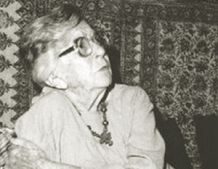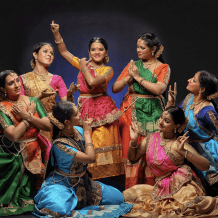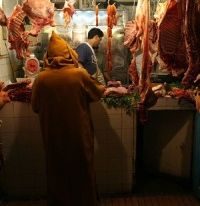
If you are interested in learning all about Moroccan Handwoven Carpets, Kelims and Textiles then a trip to Morocco’s Berber Villages and its historic souks should be on your bucket list. A trip of a lifetime to Morocco can assist in you starting a Moroccan rug collection of your own.
For an introduction to Moroccan design and the history of textiles, Marrakech’s Tiskwin Museum is the ideal place to start. The Tiskiwin reflects the life of the North African and Berber people and has many unique artifacts. It is housed in a riad with a small courtyard in the Marrakech medina.
To further discover the wide range of Moroccan carpets and kelims available a traveler you can also can hit the Marrakech souks and cooperatives such as L’Ensmble des Artisans on Avenue Mohammed V. Both will offer insight about Moroccan rugs and allow for price checking before plunging into the souks and bargaining for your first purchase.
Interior designers like Le Corbusier before the Second World War popularised Berber geometric designs that had been passed from generation to generation and were emblematic of the tribes and regions. Carpets with a black background come from the Gloua clan whereas red came from Chichoua, a small town nestled between the road from Marrakech to Essaouira.
Moroccan carpets are not similar to Persian, Turkish, or Chinese in terms of value yet their unique identity as an expression of cultural identity and their beauty makes them an attractive addition to a home or office space. Moroccan Kelims or flatweave carpets are an excellent buy.

There are a number of Western online boutiques that offer antique Moroccan carpets, such as Nazmiyal Collection, Atlas Weavers, and 1stdibs, naturally fewer of them available given they are sought after today.
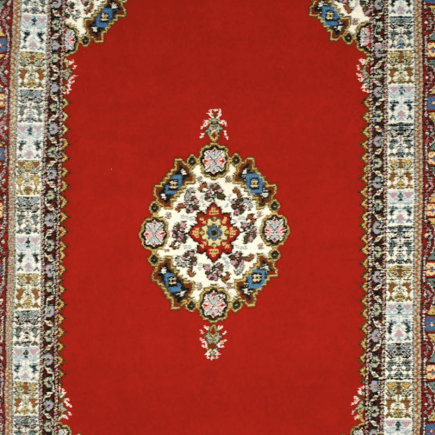
Carpets from the Imperial City of Rabat do not come from the Berber regions as they are inherently royal and made with a finer weave in rich colors such as royal blue, deep red and saffron yellow. The “r’bati” carpets are reputed to trace their origins to distant Asia Minor. It is said that the Muslims of Andalusia who settled on the banks of Rabat’s Bou Regreg River after the Spanish Reconquest in 1492 brought with them the designs and skill to produce them.
The oldest examples of R’bati carpets are from the 18th century, with these being unique, as the only Moroccan carpets where the pattern is diametrically different from those of the Berber carpets. The oldest carpets handmade in Morocco are from Taznakht, Zayane, and Hanbal, and are a source of pride for the country’s handicraft industry both at home and abroad.
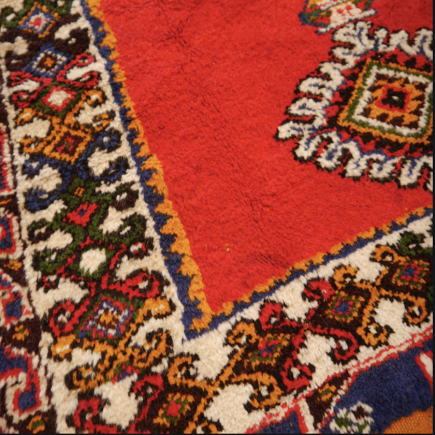
Originally woven in the High Atlas, the Berber Taznakht carpet is made of knots on two lines; their bottom is yellow with dense geometrical drawings which are red, dark green, or broken white. Each rug can take a few months to a year to complete. The weaving techniques have been passed down through the generations. This is a way the Berber women carefully preserve their heritage of technique and knowledge passing down messages in wool from one generation to another creating textiles full of life and charm.
Hanbel is a woven rug, lighter and less thick than the typical carpet. It is used as a cover for sofas or decoration during national or private feasts. Sometimes, it is used instead of carpets. It is produced in Zayane, Zemmour, and Ouazguita.
Either genuine wool or good quality cotton is used to make Habelcarpets. Threads are well spun and clean. The colors of Hanbel carpets are typically red, yellow, green, black, and brown. These colors are extracted from the plants in the Hanbel region. Originally made in Berber regions, the Hanbel contains patterns whose forms and features are inspired by nature and whose contours are inspired by Amazigh script.
There are little known and more varied flatweaves (often called kilims) from the Middle Atlas Mountains, with some Glawa or Tazenakht pile pieces from the High Atlas south of Marrakesh, especially in the Women Weavers OnLine section. Nearly all the flatweaves are in wool, with white designs (usually in cotton) for contrast, and the pile pieces are usually all wool. Floor pieces range from about 3×5 feet to 5×8 feet, though some are larger. The rectangular shape fits Moroccan rooms, in which many have already been used
What unites all Moroccan carpets is a creative, archaic spirit and a language of rural symbols and motifs. Old tribal carpets can be spontaneous and bold. Some are very plain, others full of complex motifs; some are colorful while other feature subtle hues.
Since older carpets are more difficult to find, co-operatives and Westernized Boutiques have sprung up to supply the market with copies, particularly Beni Ouarains and reproductions now abound. These can be attractive but cannot replicate the creativity and originality of an authentic piece, created with care for personal use.
Some Moroccan tribes favor certain colors. Natural dyes are primarily used only in carpets that are 70-80 years old – almond leaves, cochineal, indigo, iron sulfate, and cow urine were all once part of the carpet making process. Both synthetic and natural dyes fade – with older rugs you can be sure that most of the fading has already occurred.
The complex language of different tribal carpets reveals the richness of Berber culture and traditions. Carpet weavings and their designs contain important thoughts and ideas. More often those can be found in the symbols that appear on them which reference the natural world, fertility, birth, femininity, rural life, nature along spirituality and beliefs. Many weavers once believed that Moroccan rugs had powers to ward off evil and protect the human spirit.
For more information about Berber Carpets, Kelims, and Textiles or Shopping in the Souks of Morocco



